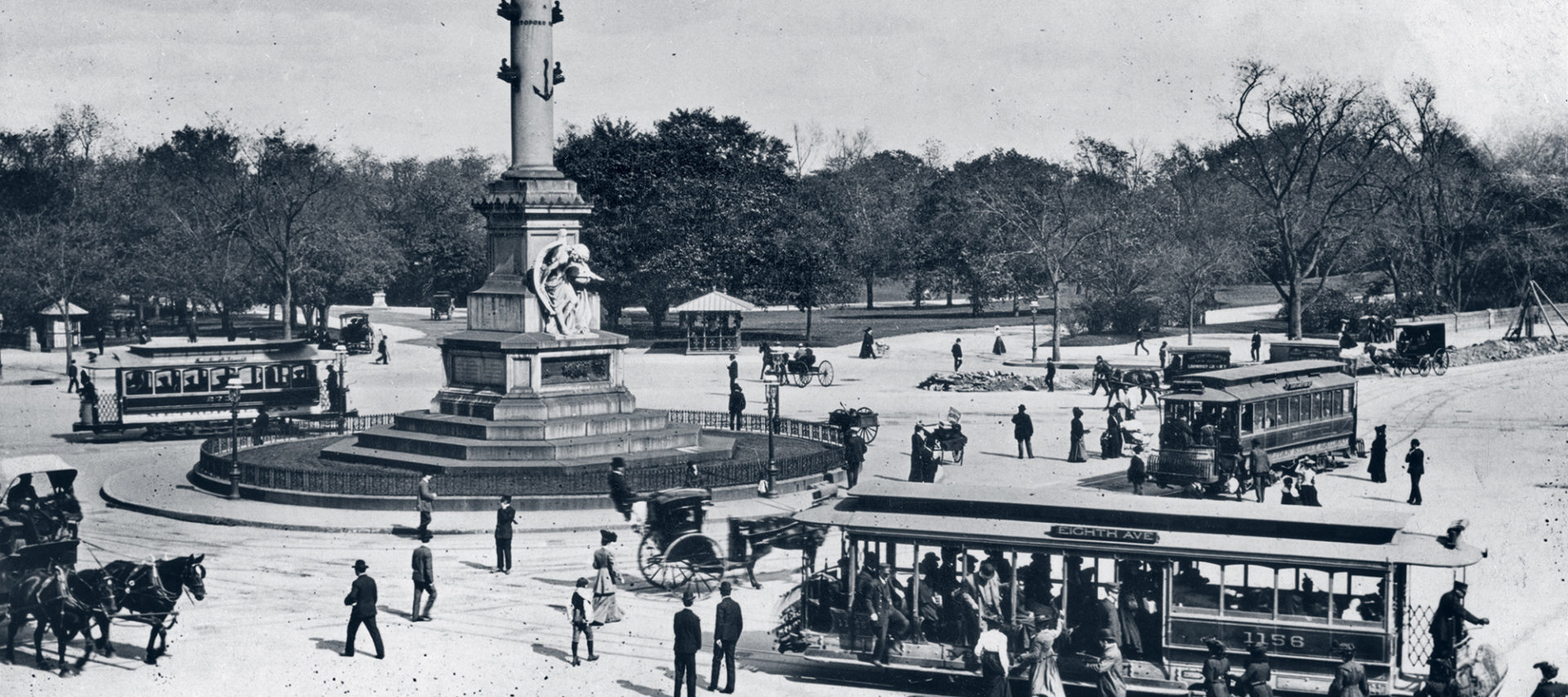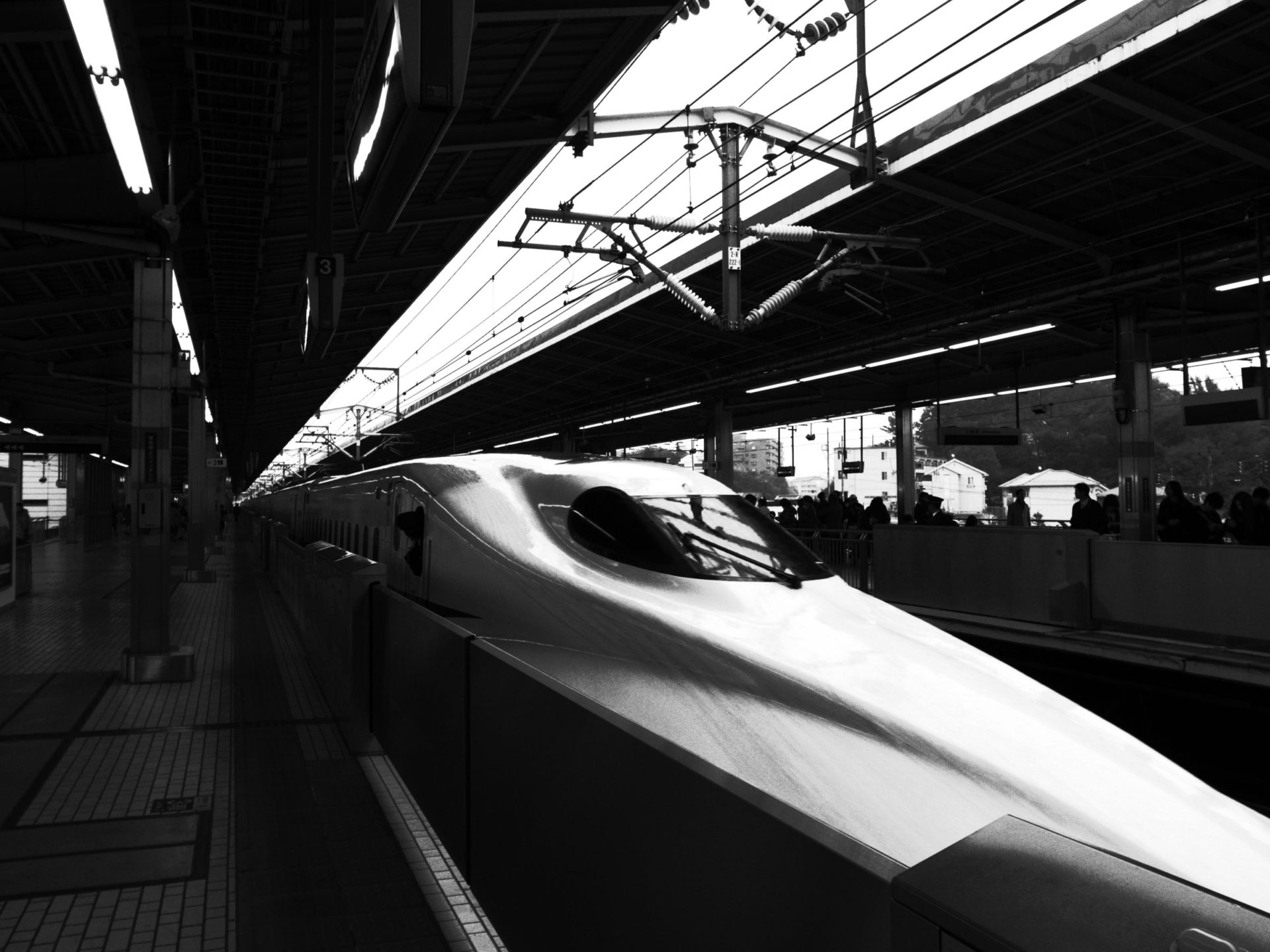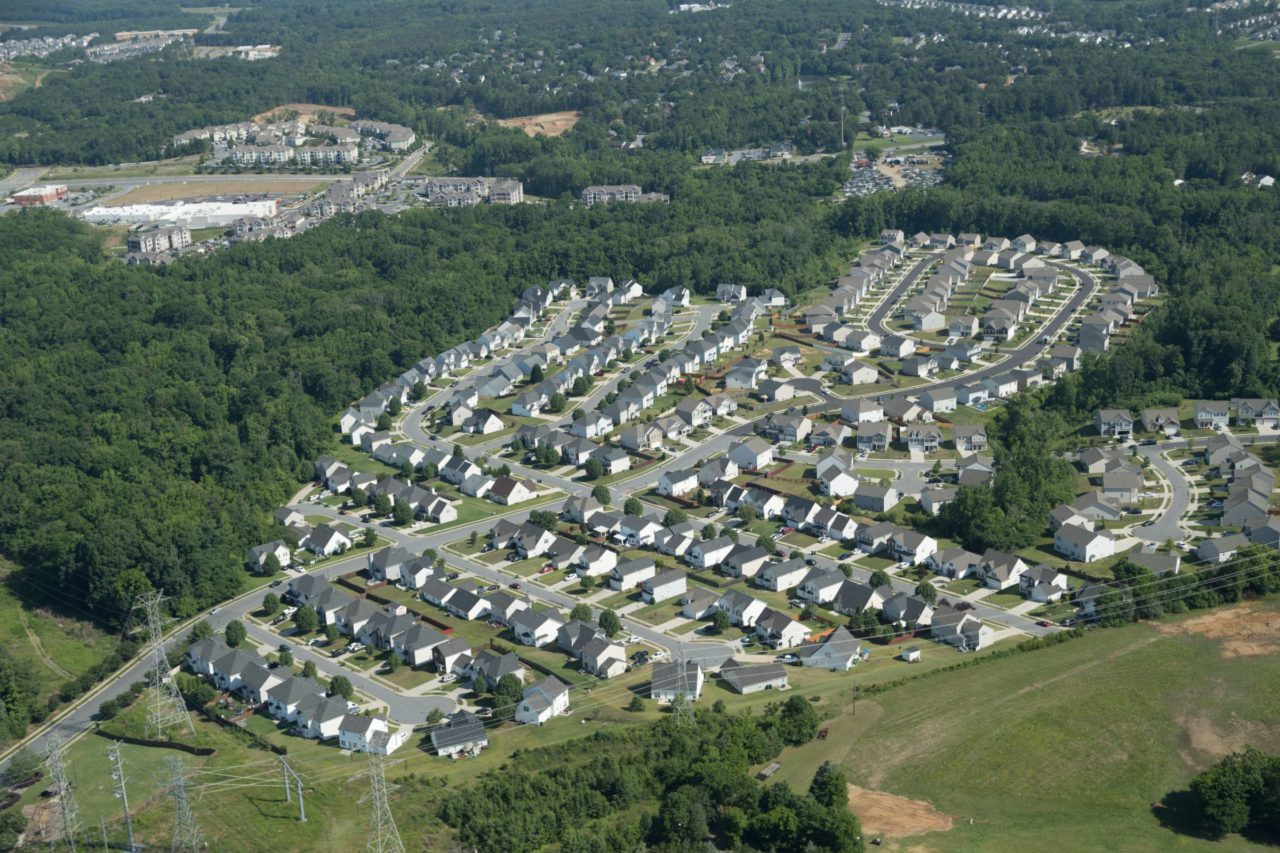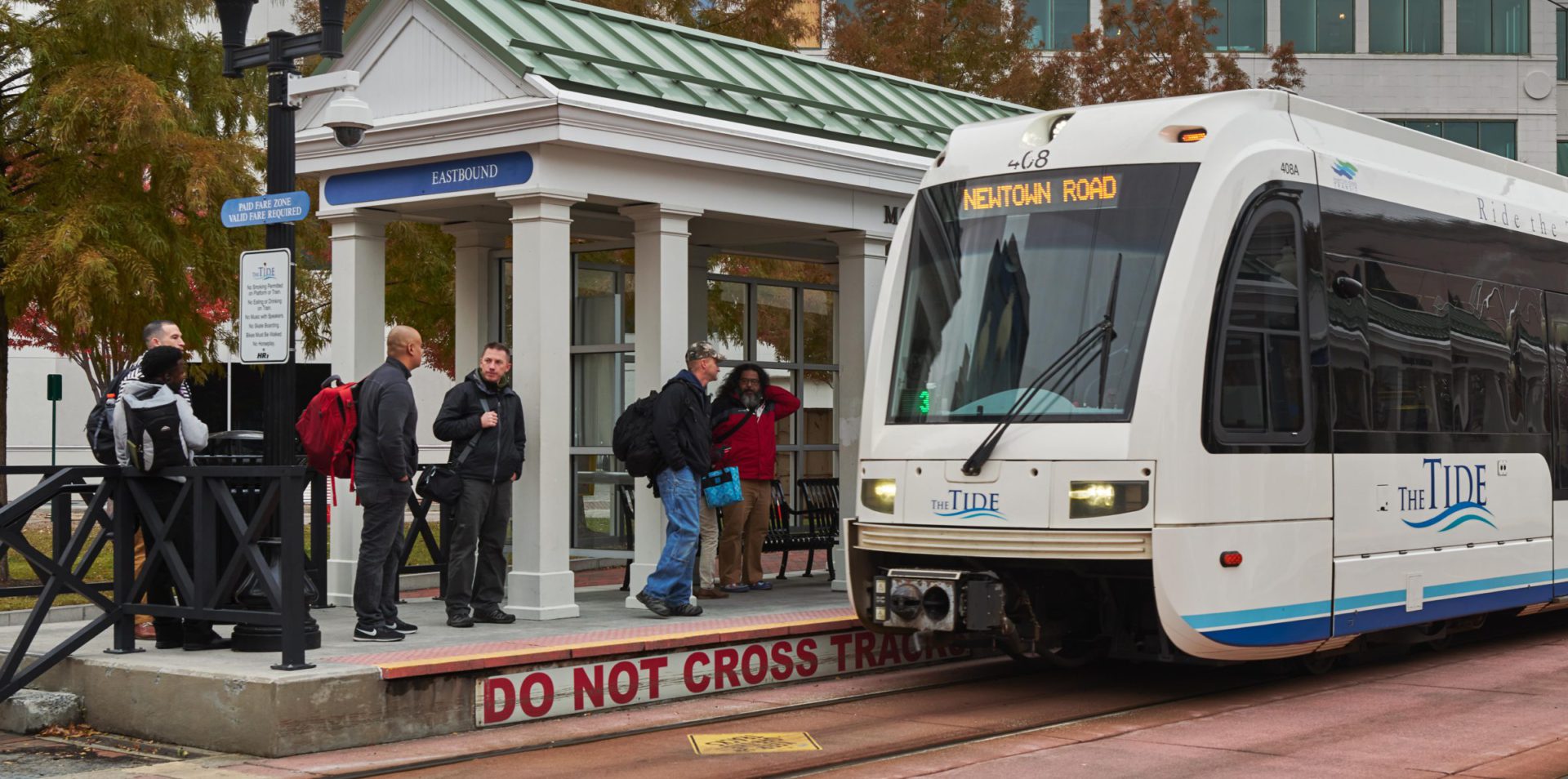

Going back at least as far as the 1990s, there have been proposals to build high-speed rail routes connecting Washington, D.C. to points north: Baltimore, Philadelphia, and New York City. America has sat watching as other countries got their high-speed magnetic levitation trains. The first “maglev” route opened in Shanghai in 2004, then Japan and South Korea followed suit. The dream here is to combine the convenience of train travel with the speed of air travel — in the process revitalizing American transportation and the sense that our country can do big things.
In recent years, the idea has seemed like it might be closer to reality. In 2017, Elon Musk announced a plan for the Boring Company, his tunneling operation, to construct a “Hyperloop,” an underground maglev that promised to cut the train ride from the capital city to the Big Apple from three hours to an incredible 29 minutes. Another project, the Northeast Maglev, claims it might make the trip in an hour. It has received $5 billion in funding from private investors and a preliminary review from the Federal Railroad Administration, and local residents of late have been subjected to a concerted ad campaign to build public support.

The transportation debate as it usually plays out today amounts to a fight between cars and transit writ large. Like so much else in American life, that fight often seems to be just another front in the culture war. On one side are those who hold to the dream of the Eisenhower era, of being able to make a single, convenient trip from any one point to another — meaning ever more roads and bigger highways must be built. On the other side are lovers of the rail, spoke, and shoe, who bemoan how cars emit carbon, highways and parking lots disrupt walkable urban centers, and the high costs of car ownership create yet another barrier for low-income people to live a normal life. In the heated contest for land, rights-of-way, and project funding, we often see these fights as a zero-sum contest between the transportation needs of Red America’s suburbs and countryside versus Blue America’s urban cores.
High-speed rail muddies this too-easy view of transportation fights. The right has grumbled about it, opposed it (as President Trump did in halting a billion dollars in federal funding for a California project), supported it (as candidate Trump did in the 2016 primary, using it to warn about the U.S. falling behind China), but mostly just ignored it. Its biggest champions have long been progressives — it was described by the New York Times as President Obama’s “signature transportation project” and was featured in the Green New Deal. But if it dies, it may be by progressives’ hands: So far, the most powerful opponents of the proposed capital city bullet trains have been activists on the left, along with local Democratic officials in Maryland.
So what gives? Are maglevs a boon for “green” innovation, or the vanity fantasies of big tech plutocrats? Are they a return to national greatness projects and a way to soothe anxieties about China’s tech might, or another central-planning federal boondoggle? If maglevs are so obviously meant to serve urbanites, why doesn’t this fight follow the same left–right division as all the others?
The dream of the bullet train is a reminder that the stuck idea of left = cities + transit and right = suburbs + cars is a recent phenomenon, and not as stable or accurate as we usually think. By looking back to an earlier moment, we might imagine ways this politics can get unstuck, and how we — and especially conservative skeptics of transit — can get American transportation policy moving again.
There is a tendency in American culture, and particularly of conservatives, to associate the automobile driver’s freedom of movement with political liberty. Despite the ubiquity of trains, subways, and streetcars in our history, some view motorists not only as entitled to public roads and free parking, but as morally superior to transit users. As George Will has written, “the real reason for progressives’ passion for trains is their goal of diminishing Americans’ individualism in order to make them more amenable to collectivism.”
To progressives, the best thing about railroads is that people riding them are not in automobiles, which are subversive of the deference on which progressivism depends. Automobiles go hither and yon, wherever and whenever the driver desires, without timetables. Automobiles encourage people to think they — unsupervised, untutored, and unscripted — are masters of their fates. The automobile encourages people in delusions of adequacy, which make them resistant to government by experts who know what choices people should make.
Time was, the progressive cry was “Workers of the world unite!” or “Power to the people!” Now it is less resonant: “All aboard!”
Will’s attack is on progressive advocates of high-speed rail specifically, but one can see how it extends to transit broadly: The individualism of the car, and the personal responsibility and agency it requires, naturally aligns it with a defense of self-government against the encroachment of bureaucratic mass management. This is Matthew B. Crawford’s argument in his 2020 book Why We Drive. “To drive,” he writes, “is to exercise one’s skill at being free.” Crawford’s target is self-driving cars, but again, the argument easily extends to buses and trains.
Aside from these philosophical critiques, suburban car drivers sometimes reject transit for more troublesome reasons, worrying that the expansion of urban transit will also mean an expansion of (by their reckoning) the wrong kinds of people into their neighborhoods — the homeless, criminals, or simply minorities. As a 2015 Slate piece reported, a largely white suburb near Dayton, Ohio long resisted a bus route implemented to help many minority workers reach their jobs at a mall. To accommodate the bus route, the suburb’s city council asked to add police call boxes and surveillance cameras at bus stops. By this logic, limited freedom of movement for those without cars is a kind of insurance against them having access to suburban neighborhoods.
It doesn’t help that the popular discourse around transit often revels in provoking drivers, following a hyperbolic “very online” style. A self-described car opponent and bike advocate in New York City tweets: “Normalize taking your sweet time crossing the street and not giving a single f*** who in a climate-controlled leather-lined empty metal box has to wait for you.” A podcast called The War on Cars — about “the epic, hundred years’ war between The Car and The City” — is an explicit attack on car culture, and implies that all motorists share some collective guilt for traffic violence.
Much of this progressive ire is directed at the presence of cars in cities. It resists how cities are shaped to suit the needs and preferences of drivers. But the attitude easily extends to sneering at rural or suburban life, especially when it seems to bleed over into cities. Consider the broad dislike of SUVs. Urbanists associate the increasing prevalence of SUVs in New York City with a rising numbers of car crashes and fatalities — and for better or worse, SUVs are also today’s standard suburban family vehicle. But instead of focusing on the broader system of car dependence, some of the most vocal urbanist car critics attack the lifestyle choices of individual motorists or car ownership generally.
Underlying the conflict between cars and transit, suburbs and cities, we might imagine a shared vision of how mobility is crucial to economic stability and flourishing communities — a vision that ought to be appealing to both liberals and conservatives.
In his landmark 1985 book Main Street to Miracle Mile, historian Chester H. Liebs traced the evolution of what we now call suburban sprawl. He describes an earlier, now largely forgotten stage of it: the streetcar suburb and the low-rise development along the outside edges of streetcar lines. In the first decades of the twentieth century, it was a transitional form of urban development, something beyond the old downtown, but not yet the modern suburb. For a brief period, the electric train and the car coexisted, producing neighborhoods that to this day are widely appealing in their density and built form. In this arrangement, the city and the suburb were not strangers but relatives.
But as the land-use planner Chuck Marohn, founder of Strong Towns, has explained, by the postwar era “the highways running through cities out to the edge of town severed the tie completely.” Now, we no longer build suburbs incrementally, as extensions of cities; we build them “to a finished state,” often without easy transit connections to their nearby urban cores.
Think of suburban developments whose overall land use, geared toward single-family homes, is fixed from the start. This means that they cannot grow in density to a point where public transit becomes a viable option. It also means that current residents will see any addition of more homes and people as a reduction in their own quality of life — less space, more traffic, more competition for amenities. Marohn describes this as like being at a “bad party” where people eat more food than they brought. Such suburban developments are inherently resistant to growth, inclined toward NIMBYism (“not in my backyard”), and by design dependent on roads and cars.

The point of a car, in this arrangement, is to make it easier to cross the distance that the car itself created. Understandably enough, car enthusiasts may see this as a kind of liberation from the confines of city life and management.
But what is missing in this picture is that the suburb offers space, comfort, and freedom only because the city offers the jobs, amenities, and services that suburbanites depend on — sometimes even including such necessities as fire departments and waste disposal systems. Suburban drivers, in this sense, might be more accurately described as dependent than as self-reliant, self-governing, and free.
When put this way, the American suburb looks a bit like certain welfare and health care programs that conservatives often criticize, including public transit — structures that are inherently at high risk of being financially unsustainable because they incentivize members to take more than they give.
The ways that a car makes me free is easy to see and feel. The ways that cars — the massive patterns of life that support the entire enterprise and are built up around them — make us unfree takes work to see. But once seen, they demand our attention.
There is a case for transit of some form or another that should appeal to the right — to free-marketers who value offering consumers a variety of choices in their way of life, and to social conservatives who value thriving communities.
If the point of cars for most people is to connect them with their jobs, schools, businesses, and amenities — all necessities of thriving economic life and neighborhoods — the same applies to transit for those who don’t have access to cars (about eight percent of U.S. households), or who would be financially better off not owning one. An old, unreliable car is more expensive and frustrating than an unreliable bus route, and many Americans have trouble making their car payments. With some car loans lasting as long as seven years, a loan can easily outlive the car it’s paying for.
Our economy depends on the ability of workers to live within reasonable commutable distance of all kinds of jobs. An expensive metro area still needs the janitors, parking attendants, and restaurant workers it has priced out of its housing market. Yet expensive cities are often no more hospitable to allowing low-income workers to commute there than to live there. How much growth — and how much tax revenue — is foreclosed because of weak transportation systems? How many opportunities for an entrepreneurial person with an idea and some cash are rendered unworkable?

Consider Washington, D.C.’s Metro system, which currently ends service at midnight, even on weekends. This often forces the hospitality and service workers who power the city’s bars, restaurants, and nightlife venues to pay for rideshare to get home, whose prices are now elevated over their already expensive normal levels. In May, when the Metro was closing even earlier, some workers waited for hours after their shift for rideshare prices to drop below $50. The patrons at late-night venues are likely to have either a designated driver or the cash for an Uber home. Many live in the city. But service workers, priced out of the city’s housing market, and working too late to catch the final train, have fewer options.
Improved transportation systems are also ultimately good for families. Commute times have been steadily inching up over the years, to an average of about one hour round-trip (pre-pandemic). Some research suggests that such long absences of a parent from the home, and built-up frustrations from the commute, harm children’s emotional and social well-being. Nobody wants to commute for an hour every day. This is a sign of transportation systems failing in multiple ways, suffering both increasing highway congestion and poor transit service. Expansion of road systems and transit systems would mean more family time, and so both ought to be causes that social conservatives no less than progressives can agree to support. Similarly, reliable transit systems around schools could cut down on frustrating hours lost to queuing in a car at the pick-up line, or to driving kids to extracurricular activities.
Conservatives, understandably, often counter such points by emphasizing the importance of individual responsibility and cultivating good habits and a strong work ethic to overcome these obstacles as a family. But family-friendly policies and built environments can complement such desirable personal attributes.
Recognizing all this might help to reframe a set of ideas that have, mostly by happenstance, come to be associated with the left.
Elon Musk’s Hyperloop seems to have died a quiet death: In April, Bloomberg News reported that the Boring Company had scrubbed the project from its website. That same month, two council members from Prince George’s County, Maryland, where about half of a possible Washington-to-Baltimore route would lie, published a Washington Post opinion piece opposing the Northeast Maglev project. And in June, Baltimore’s planning and transportation chiefs officially announced that they opposed the project — a possibly fatal blow.
Downtown from Washington’s Union Station to Baltimore’s Penn Station in 15 minutes, New York City’s Penn Station in an hour: From commuters to business travelers to weekend adventurers, who could oppose such a project?
Well, for one, the neighborhoods the new train line would pass through without stopping, many of which are working-class, low-income, or minority. Those neighborhoods would “get only the noise, pollution, disruption to businesses, homes torn down, loss of riders on Amtrak and MARC, loss of economic prosperity and more as the trains speed by us — figuratively and literally,” the Prince George’s County council members wrote. Baltimore’s leaders cited similar concerns, and argued that at a projected ticket price of $60 one-way — the MARC train costs $9 — the Northeast Maglev would be least useful to those whose lives it would most disrupt.
The council members contrast the maglev with the Purple Line, a light rail project already under construction that aims to connect a series of outlying town centers, forming a partial ring around D.C. The Purple Line, they argue, will bring economic development “while fulfilling the transportation needs of everyday people every day.” For the council members, there is a choice of priorities: mass-scale projects that eliminate distance mainly for people traveling from one urban core to another — or projects that stitch together the suburbs, encouraging growth for ordinary Americans.
In these progressive fears — about mostly urban elites being empowered at the expense of ordinary communities — and progressive hopes of expanding these communities’ economic opportunities, conservatives ought to be able recognize some of their own concerns. But perhaps everyone can also recognize the limits of casting all transportation fights in terms of left and right. What the Post authors offer is a way to get beyond the transportation culture war and toward a shared fundamental commitment, for both left and right should be able to agree that infrastructure — whatever else it should do — should foster thriving, local communities. In this respect, debates about mega-projects like high-speed rail, centered as they are on serving relatively few Americans, are a distraction from less exciting but more important questions.
Whose neighborhood counts more? Whose freedom? These are the questions that are tacitly at stake in the fight between cars and transit. Some tradeoff here, surely, is inevitable. But in bringing these questions to the surface, we might be able to think about shelving flashy high-tech projects, and focus instead on meeting the disparate needs of local communities of all kinds.
The debates over cars and trains, suburbs and cities, are so thorny partly because both are drawing on something captivating in our country’s history. The struggle in American life between settled-ness and rootlessness, between home and the open road, is not a struggle in which one side should get the upper hand. They depend upon one another. A new era of thinking about American transportation must demand freedom of mobility for both.
Exhausted by science and tech debates that go nowhere?